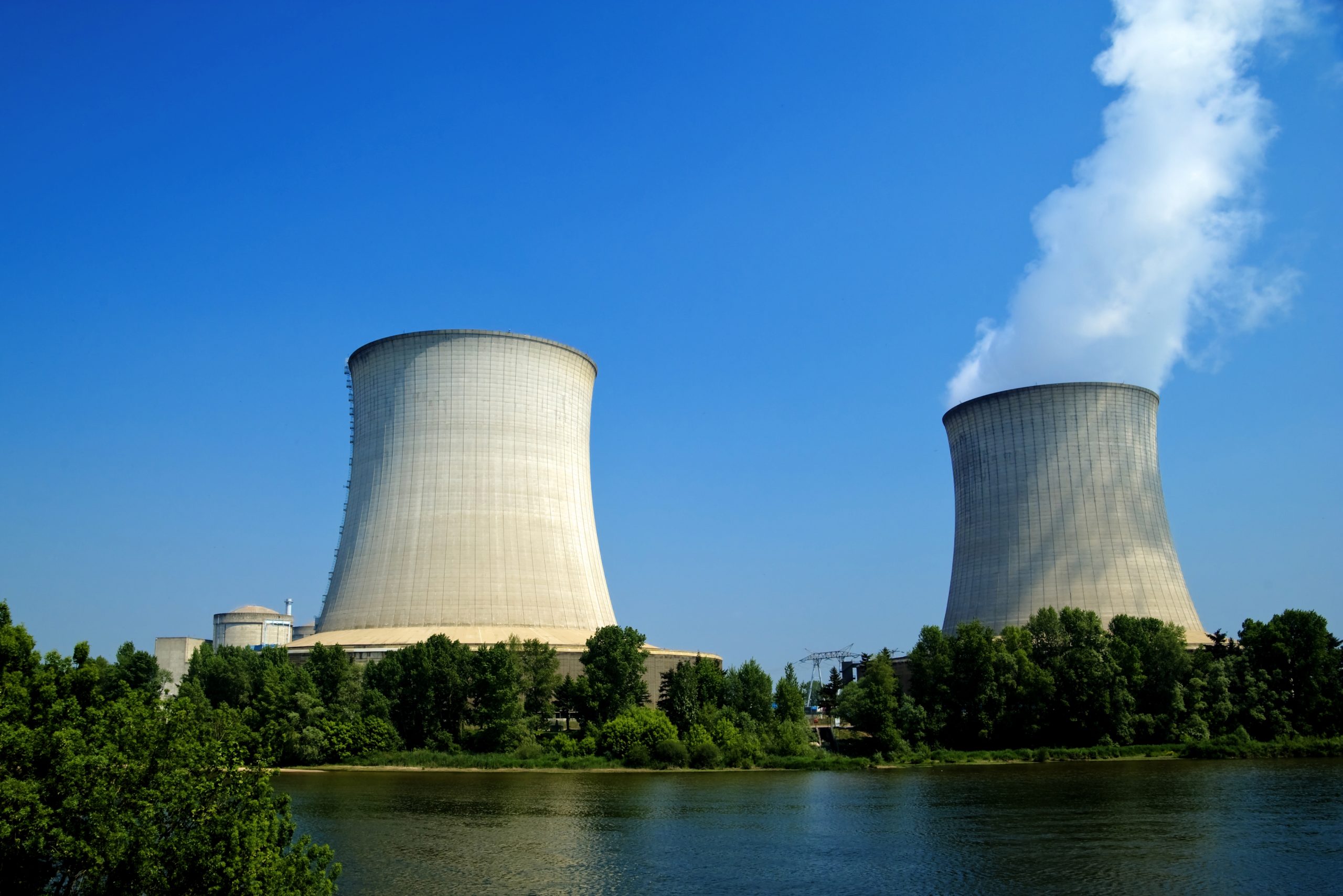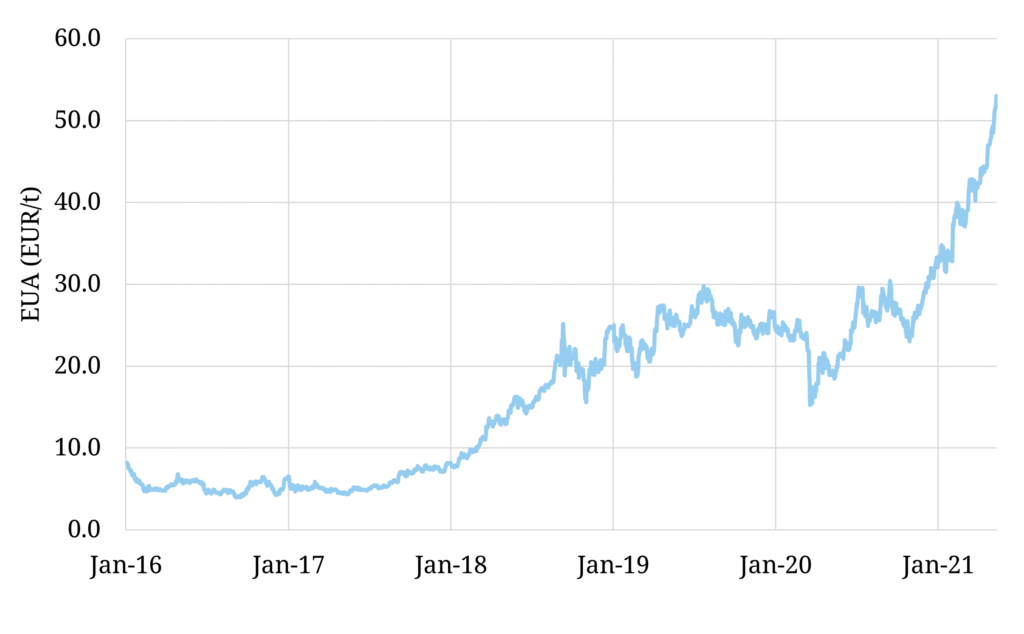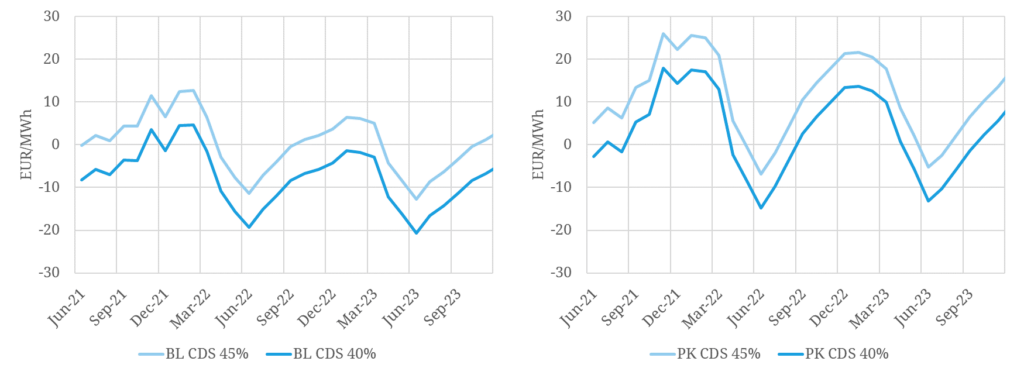2021 has seen a relentless rally in EUA carbon prices, as Europe raises the bar on emissions reduction.
“Germany’s current policy framework is flirting with major power market disorder across the next 2 – 3 years”
To put the price rise in context, EUAs are now more than 10 times the level of 5 years ago, as can be seen in Chart 1. More than 60% of that increase has taken place over the last 6 months, with prices rising from 24 €/t in Nov 2020 to 56 €/t this month.
In 2020, Germany set out a regulatory driven timeline to close its fleet of coal & lignite plants by 2038. Carbon prices at current levels are likely to precipitate closure at a much faster rate, in Germany, as well as in its large exporting neighbours, Poland and the Czech Republic.
Accelerated coal closures are also consistent with accelerating emissions policy momentum in Germany. The German cabinet last week approved draft legislation to increase its emissions reduction targets to 65% (from 1990 levels) vs 55% previously, also pulling forward its net zero emissions target to 2045.
It is time to consider what could happen to the German power market (and its neighbours) if coal closures accelerate across the 2020s.
Carbon prices & coal plant economics
Carbon EUA price increases broadly pass through into wholesale power prices via the variable cost impact on CCGT plants that dominate marginal price setting across European power markets.
Gas-fired plants (0.4 t/MWh) have a significantly lower carbon intensity than coal (0.8 t/MWh) and lignite (1.1 t/MWh). That means rising carbon prices erode coal & lignite generation margins.
If we assume for simplicity that EUA price rises are passed through based on CCGT carbon intensity, every 1 EUR/t rise in EUAs:
- Reduces coal plant margins or Clean Dark Spreads (CDS) by 0.4 €/MWh
- Reduces lignite plant margins or Clean Brown Spreads (CBS) by 0.7 €/MWh.
In other words power prices rise to compensate marginal gas plants for higher carbon costs, but this falls well short of the variable cost impact on coal and lignite units.
These numbers illustrate the downward impact of the more than 30 €/t rally in carbon prices on forward CDS and CBS over the last 6 months. Current forward CDS levels for lower efficiency (40%) and higher efficiency (45%) German coal plants are shown in Chart 2 (assuming 10 €/t of variable coal transport costs and 1 €/t variable plant costs).
Chart 2 shows coal plants on a forward price basis being pushed out of merit across the summer months and operating a peaking profile in shoulder months. This varies by station depending on flexibility, coal transport costs etc.
Hard coal plants have fixed costs that range from 30-50 €/kW/yr. That is the equivalent of 4-7 €/MWh of generation margins assuming a baseload running profile just to cover fixed costs.
More flexible coal plants can create some additional value by profiling generation into peak periods. But many coal plants have flexibility constraints and high start costs which limit their ability to provide peaking flexibility. If carbon prices remain at these levels, the writing is on the wall for the German coal fleet.
Forward lignite plant generation margins (Clean Brown Spreads or CBS) are also being pushed well below fixed costs by rising carbon prices and turning negative across summer months. Lignite plant operators face a decision to either idle the plant, or decommission the plant & mine entirely, ahead of regulatory scheduled closure timelines.
These closure decisions are complicated by the impact of closure compensation and local political considerations e.g. around worker layoffs and unions.
Carbon prices overcooked?
There can be no doubt that carbon EUA prices are in a structural uptrend since Europe stepped up its ‘green new deal’ emissions response in 2020. But as the EUA price rise starts to take a parabolic shape approaching 60 €/t, it’s time to ask the question – is there a growing risk of a major price correction?
There are two factors that are set to provide some significant price resistance at these levels, neither of which is receiving much press:
- The ‘in the moneyness’ of coal & lignite generators is declining on a forward basis as EUA prices rise, driving the unwinding of forward hedges and generator selling of EUAs.
- UK generators are set to sell EUAs they have been using as proxy hedges and replace them with UK carbon allowances, as the UK ETS come online this month.
Media attention appears more focused on lofty price targets (e.g. 100 €/t) put out by several hedge funds. EUAs may reach this level at some point this decade, but the red warning flag is hoisted when investment podcasts start touting carbon as the ‘trade of the century’ as has been the case this month. This suggests there is a good deal of near term speculative froth driving what is at its core an emissions compliance focused market, with a history of heavy handed steering by regulators.
The missing link in Germany’s power market transition
EUA price correction or not, the probability of accelerated coal closures in Germany is rising rapidly. There is currently a popular narrative in Germany that runs along the lines of:
“close coal & nuclear plants and replace them with renewables, storage & interconnectors”.
This narrative is consistent with decarbonisation of the power sector as required to meet Germany’s emissions targets. But it significantly oversimplifies the challenges the German power market faces across the next 5 – 10 years.
Put in simple terms, Germany needs to replace 8 GW of nuclear (closing by end of 2022), 15GW of coal and 14GW of lignite capacity (most of which will now likely close by the mid 2020s). The majority of these units have been running at relatively high load factors i.e. orders of magnitude more GW of wind & solar capacity is required to replace it, given lower average load factors (& even lower derating factors).
German power demand is also set to increase significantly from mid-decade as transport is electrified and electrolysers come online to meet Germany’s hydrogen targets.
The renewables part of the narrative is being backed by action, with policy makers ramping up support for wind & solar investment to hit the revised 65% German 2030 renewable target. But deployment takes time and it needs to be backed up by adequate flexibility.
It is the ‘storage & interconnectors’ bit of the narrative which appears to be the Achilles heel of Germany’s approach, for two reasons:
- The flexible capacity required to maintain an orderly power market transition is much broader than ‘storage & interconnectors’
- There is currently no price signal mechanism to support investment in the flexibility required.
Although there are some sections of both industry and government that understand this challenge, Germany’s current policy framework appears to be flirting with major power market disorder across the next 2 – 3 years. By that we mean major network stress events, price spikes and a structural rise in price volatility.
What is needed in Germany is a much more constructive policy framework to support investment in flexible capacity. For example Germany is currently one of the less attractive markets in Europe from a battery investment perspective.
If we are right about market disorder, policy makers and system operators will likely intervene on a short term basis in response e.g. via reserve contracts, ancillary markets or asset reserve pools. The existing stability reserve mechanism was called on multiple times across Q1 2021 to support the market.
However the enduring solution for Germany’s flexibility issue, like in most other European countries, is likely to be some form of capacity market.


